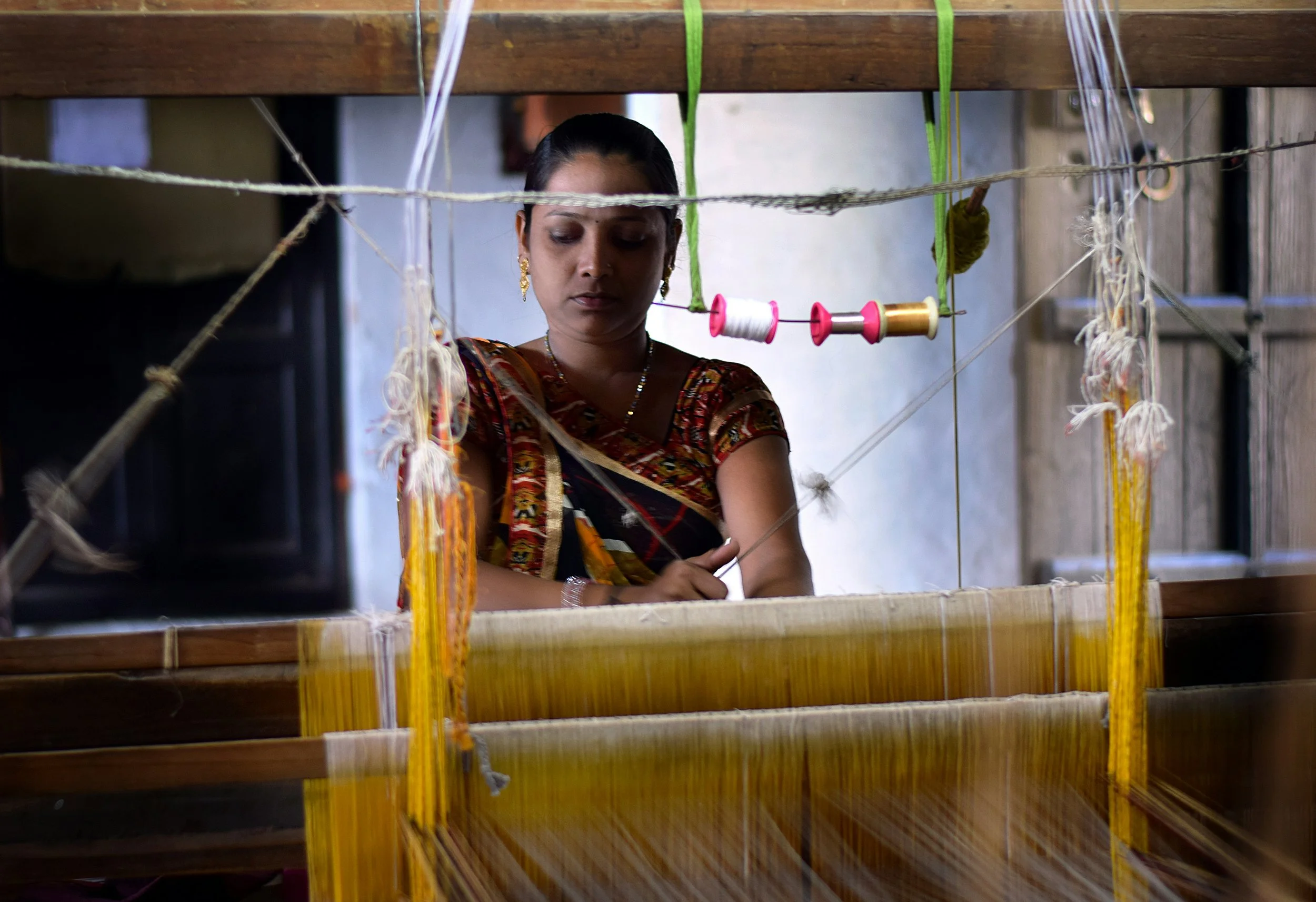Chanderi & Maheshwari Sarees: A Traveller’s Guide to Madhya Pradesh’s Handloom Heritage
Madhya Pradesh is more than the heart of India geographically — it is also the heart of India’s textile heritage. The state’s looms have been spinning stories for centuries, producing fabrics that are not just garments but heirlooms. Two of the most celebrated weaves from this region — Chanderi and Maheshwari — carry centuries-old legacies, exquisite craftsmanship, and timeless beauty.
From royal patronage to contemporary couture, these handlooms embody a blend of cultural history, local identity, and artisanal excellence.
Chanderi: The Fabric of Royal Grace
Origin
The town of Chanderi, located in Ashoknagar district, has been a weaving hub since at least the 11th century. While references to Chanderi fabric appear in Mughal chronicles, the tradition is believed to have begun much earlier, influenced by trade routes connecting Malwa, Bundelkhand, and Central India. The craft flourished under royal funding during the Bundela and Mughal reigns, when Chanderi sarees became synonymous with elegance.
Unique Features & Weaving Techniques
Chanderi fabric is noted for its sheer texture, lightweight feel, and glossy transparency — qualities achieved through the use of fine silk warp and cotton weft. Gold and silver zari threads are delicately woven into patterns, giving the fabric a luminous, almost ethereal quality. The weaving process is painstakingly manual, with each saree taking days to weeks to complete.
Common Patterns
Butis (Motifs): Geometric, floral, and peacock motifs dominate, often inspired by temple architecture.
Doria & Jangla: Striped or vine-like patterns across the saree.
Coin Buti: Small, coin-shaped motifs scattered across the fabric.
Maheshwar: The River’s Gift to Weavers
Origin
Maheshwar, a consequential town on the banks of the Narmada, rose to prominence under the rule of Ahilyabai Holkar in the late 18th century, the queen of the Maratha Malwa kingdom. She invited master weavers from across India to settle in Maheshwar, leading to the birth of the now-iconic Maheshwari weave. Originally intended for royal court attire, these sarees are today treasured for both everyday wear and ceremonial occasions.
Unique Features & Weaving Techniques
Maheshwari sarees are distinguished by their reversible borders, enabling them to be draped either way. The base fabric is usually a blend of silk and cotton, giving it both softness and durability. Borders and pallus often feature intricate patterns inspired by Ahilyabai’s palace architecture, temple steps, and fort walls.
Weavers use pit looms, and each saree involves meticulous interlacing of dyed threads to achieve the rich colour combinations Maheshwar is known for.
Common Patterns
Chatai: Mat-like pattern.
Eent: Brick-inspired design.
Heera: Diamond motif.
Leheriya: Wave-like diagonal stripes.
Authentic Places to Buy Pure Chanderi & Maheshwari Sarees
For Chanderi Sarees:
Chanderi Weavers’ Cooperative Society (Chanderi town) – Direct from artisans, ensuring authenticity and fair trade.
Chanderi Handloom Cluster Showrooms – Supported by the government and NGOs, offering certified pure handloom pieces.
Raw Mango Store (select cities) – Designer interpretations of Chanderi using traditional techniques.
For Maheshwari Sarees:
Rehwa Society (Maheshwar) – Founded to revive Maheshwari weaving, it supports women weavers and offers original designs.
WomenWeave Charitable Trust (Maheshwar) – Known for ethically produced and naturally dyed Maheshwari fabrics.
Maheshwar Handloom Cluster Workshops – Opportunity to see looms in action before purchase.
Why Visit Madhya Pradesh for Its Handloom Heritage
Meet the Makers: Watch artisans at work, preserving centuries-old traditions.
Cultural Immersion: Understand how local architecture, nature, and history influence designs.
Sustainable Fashion: Support eco-friendly, slow fashion by buying directly from weavers.
Heritage Tourism: Combine your textile trail with visits to historical forts, ghats, and temples in Chanderi and Maheshwar.





